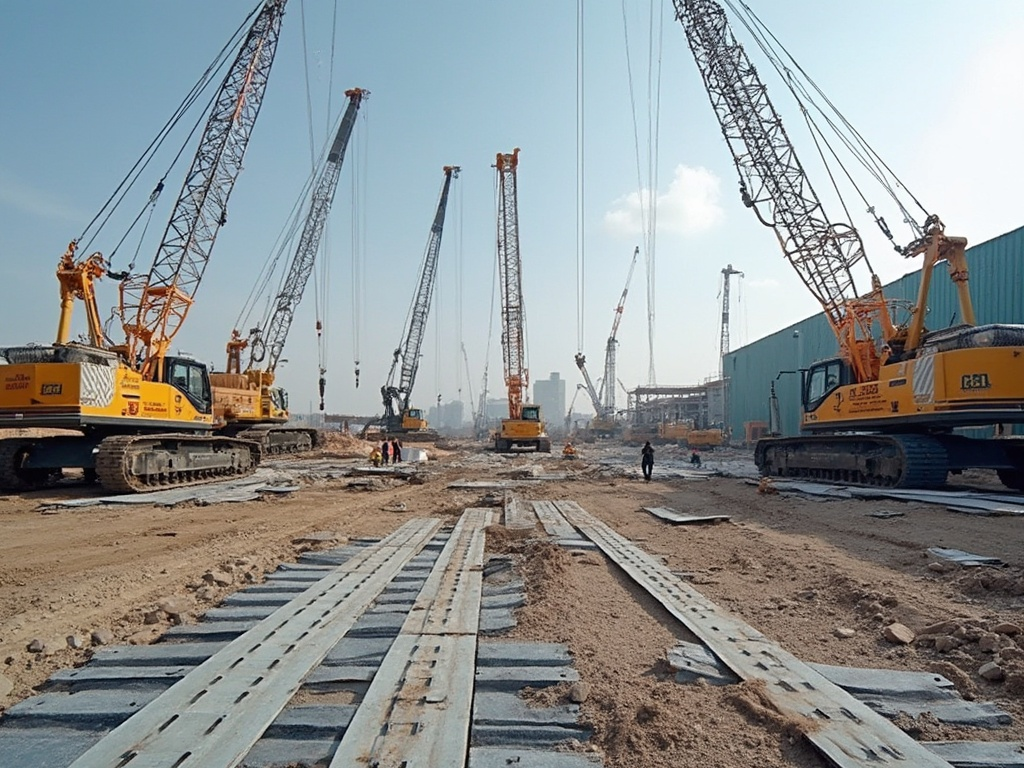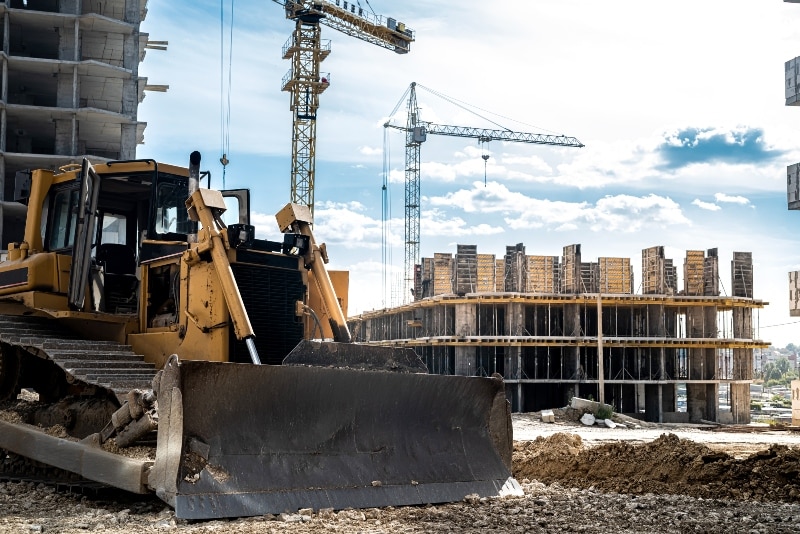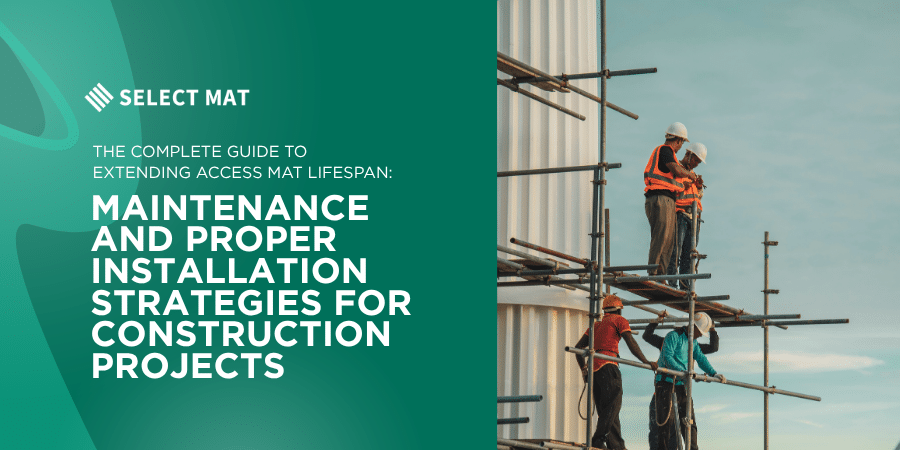 Innovative crane mats have become a pivotal element in the safe and efficient handling of machinery within the ever-evolving landscape of the construction industry—especially during pipeline and transmission & distribution (T&D) projects. With new designs and technologies on the rise, these mats are now revolutionizing operations and capturing the attention of rental customers like never before.
Innovative crane mats have become a pivotal element in the safe and efficient handling of machinery within the ever-evolving landscape of the construction industry—especially during pipeline and transmission & distribution (T&D) projects. With new designs and technologies on the rise, these mats are now revolutionizing operations and capturing the attention of rental customers like never before.
Let’s explore the history of crane mats, their applications, the positive impact they’ve had on the industry, and how modern innovations highlight a strong commitment to efficiency and forward-thinking practices.
The History of Crane Mats
Early civilizations utilized individual timber planks to create rudimentary roads in soft or boggy ground conditions. With modern machinery and cranes, came the need for a more suitable “plank road” to withstand the increased demand for stable ground. Plank boards we screwed or bolted together to give a large, more stable surface to work on.
Thus, the journey of a crane mat was born when they were first introduced around the turn of the century to combat the challenges associated with heavy equipment in construction. Crafted from 12” thick hardwood planks and bolted together in 4’ widths, these mats served the purpose of distributing the weight of cranes and other heavy machinery, particularly on soft or unstable ground. This simple yet effective solution prevented damage to the underlying terrain and reduced the risk of crane topple accidents or other equipment failure.
The Essential Role of Crane Mats in Operations
Crane mats play an indispensable role in construction operations, especially in pipeline and T&D projects. Various factors contribute to their continued necessity in the industry:
Load Distribution
One of the primary functions of crane mats is load distribution. Heavy machinery such as cranes, excavators, and drilling rigs exert significant pressure on the ground beneath them. Without adequate support, this can lead to sinking, tilting, or catastrophic topples. Crane mats effectively spread this weight over a larger surface area, ensuring stability and safety during operations.
Ground Protection
In many construction scenarios, especially in sensitive ecological areas or urban environments, protecting the ground from damage is essential. Crane mats form a protective barrier between heavy machinery and the terrain, reducing the risk of excessive soil compaction, ruts, and other forms of degradation. This aspect is particularly crucial for environmental and safety compliance officers, who must adhere to strict regulations.
Increased Mobility
By facilitating the movement of heavy equipment over challenging terrain, crane mats substantially enhance operational efficiency. They provide a solid foundation that allows cranes and other machinery to navigate soft, muddy, or uneven ground that would otherwise be inaccessible. This increased mobility minimizes project delays and maximizes productivity.
Safety Assurance
Safety is paramount in the construction industry. Crane mats reduce the risk of accidents, protecting both the machinery and the personnel involved in operations. By providing a stable and level working platform, they help prevent tipping and reduce the likelihood of equipment failure. This reliability appeals to project managers and supervisors who prioritize safety in their operations.
Transforming the Industry: The Positive Impact of Crane Mats
The innovation of crane mats has had far-reaching effects on the construction industry. Here are the major positive impacts that have emerged:
Enhanced Efficiency and Productivity
The introduction of advanced crane mat solutions has streamlined operations, allowing for quicker setup and breakdown times. Rental customers benefit immensely, as they can easily deploy crane mats when needed without the hassle of purchasing and storing them. This flexibility translates to increased productivity and overall project efficiency.
Cost-Effective Solutions
For many rental customers, cost is a significant factor in their decision-making process. Innovative crane mats, designed for durability and efficiency, reduce the frequency of replacements and maintenance. This cost-effectiveness makes them an attractive option for construction contractors looking to manage budgets efficiently while still maintaining high safety standards.
Easy Transportation and Deployment
Crane mats have become a necessity no matter where you are in the country. So, most mat rental companies have strategically placed storage yards that enable quick deployment to and from job sites, minimizing logistical headaches. Project and construction managers particularly appreciate the ability to manage resources effectively and deliver on project timelines without unnecessary delays.
Adoption of Cutting-Edge Technology
We are on the cusp of crane mats use of technology that adds functionality and safety features. Some mats are now equipped with integrated sensing systems that can provide real-time data on stability and load distribution. These innovations appeal to forward-thinking professionals who are looking to integrate smart solutions into their operations, enhancing overall effectiveness.
Commitment to Cutting-Edge Technology
With the rapid pace of technological advancement in all walks of our lives, it is crucial for construction businesses to embrace innovative solutions that drive efficiency and operational excellence. The evolution of crane mats mirrors this commitment to cutting-edge technology, showcasing how companies are looking to cater to the needs of rental customers.
Smart Mats for Smart Construction
As the industry incorporates smart technologies, we see the introduction of “smart mats” on the horizon. Mats equipped with load sensors and monitoring systems, can offer valuable insights that empower contractors to make informed decisions. This innovation is particularly attractive to project managers who value data-driven approaches to enhance efficiency and safety on-site.
Customization Options
Rental customers increasingly seek solutions tailored to their specific needs. Innovative crane mats provide customization options, allowing companies to select mats with varying dimensions, load capacities, and materials. This adaptability ensures that construction teams get exactly what they need to perform their tasks efficiently and safely, reflecting a high level of customer commitment.
The Future of Crane Mats in Construction
As the construction landscape continues to evolve, the role of crane mats will undoubtedly expand. Continued innovation will lead to enhanced materials that are lighter, more durable, and more sustainable. Additionally, the integration of digital technologies will enhance monitoring capabilities, further solidifying the relevance of crane mats in modern operations.
Conclusion
Crane mats have come a long way since their inception, evolving from wooden structures to innovative, high-tech solutions that significantly impact the construction industry. For rental customers involved in pipeline and T&D projects, the benefits of using these mats are immense. The commitment to cutting-edge technology and operational efficiency showcased by crane mat providers speaks volumes about the future of construction operations.
With their ability to ensure safety, enhance productivity, and protect the environment, innovative crane mats truly revolutionize operations and offer a promising horizon for the construction industry. Contact us today.




